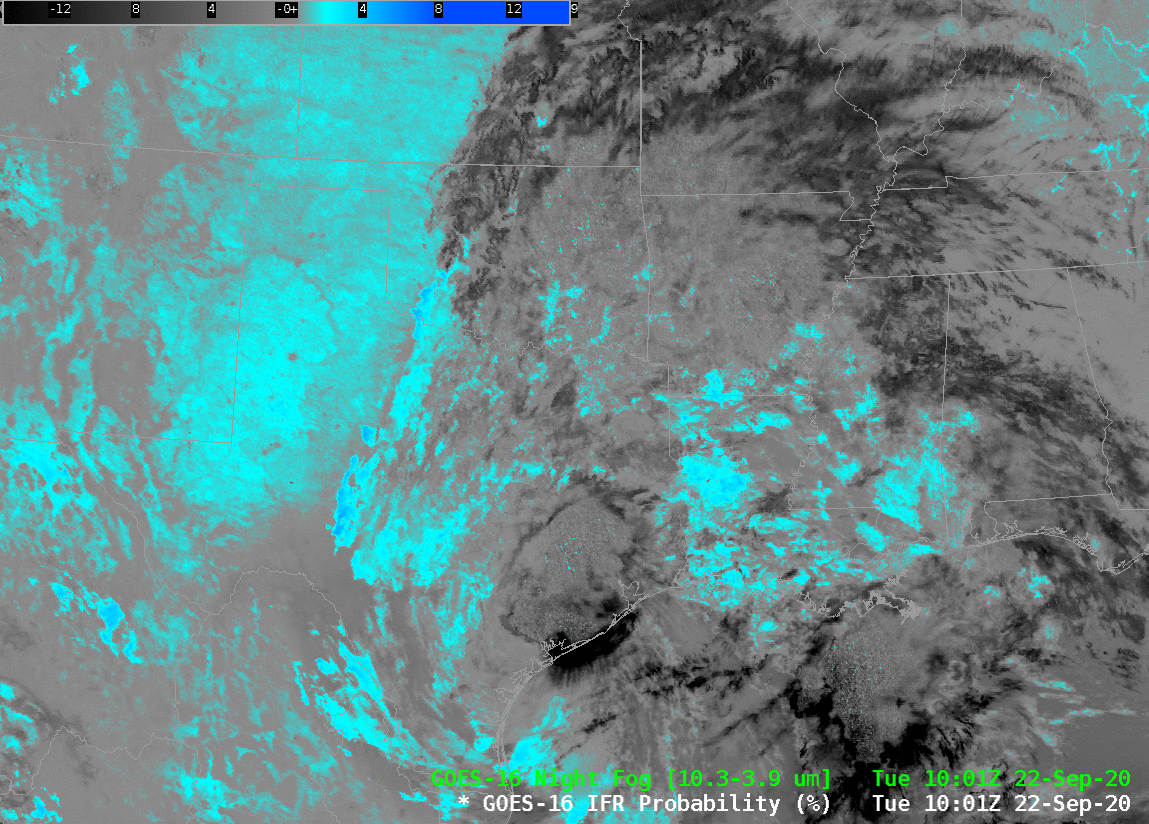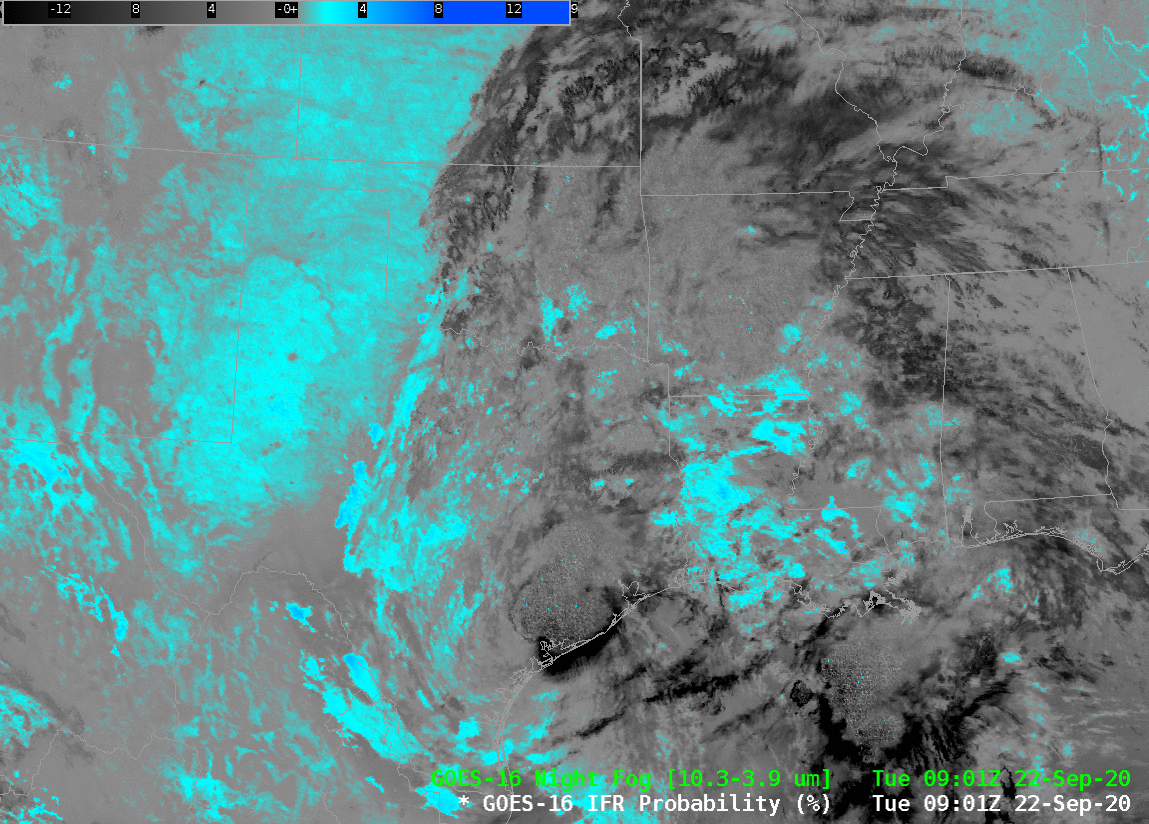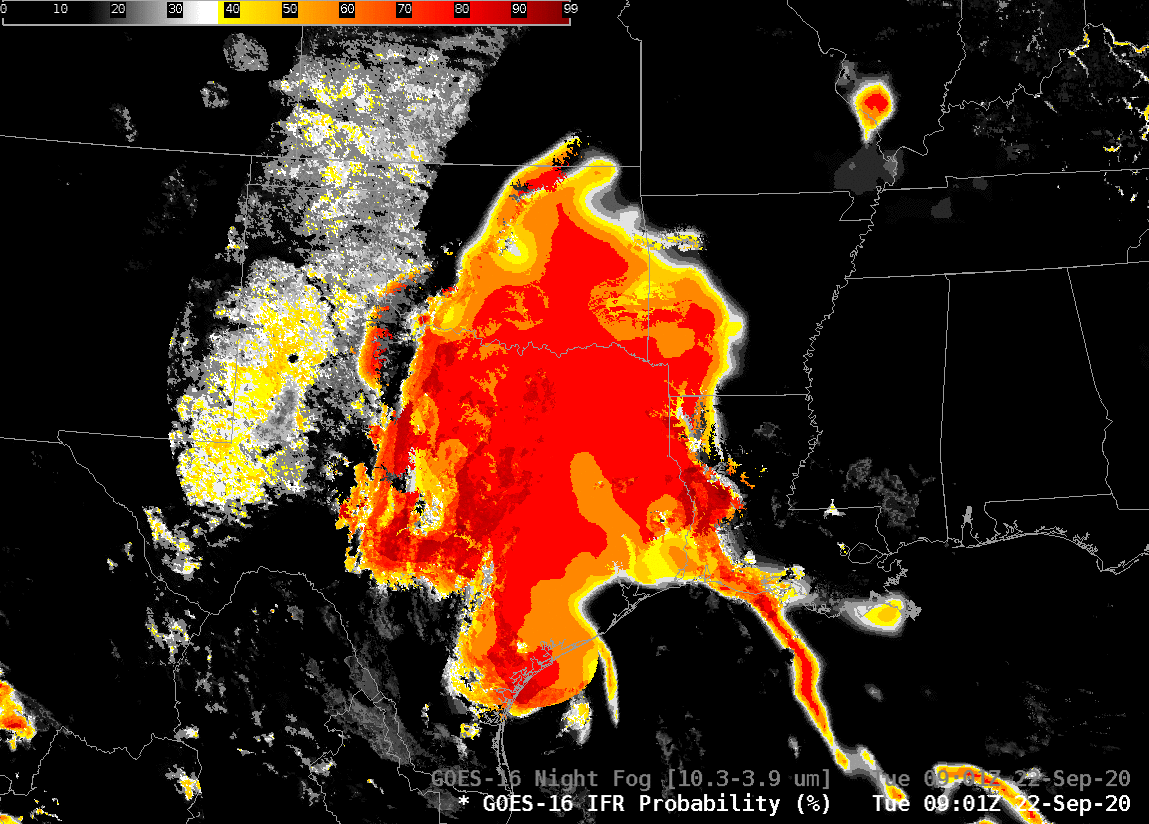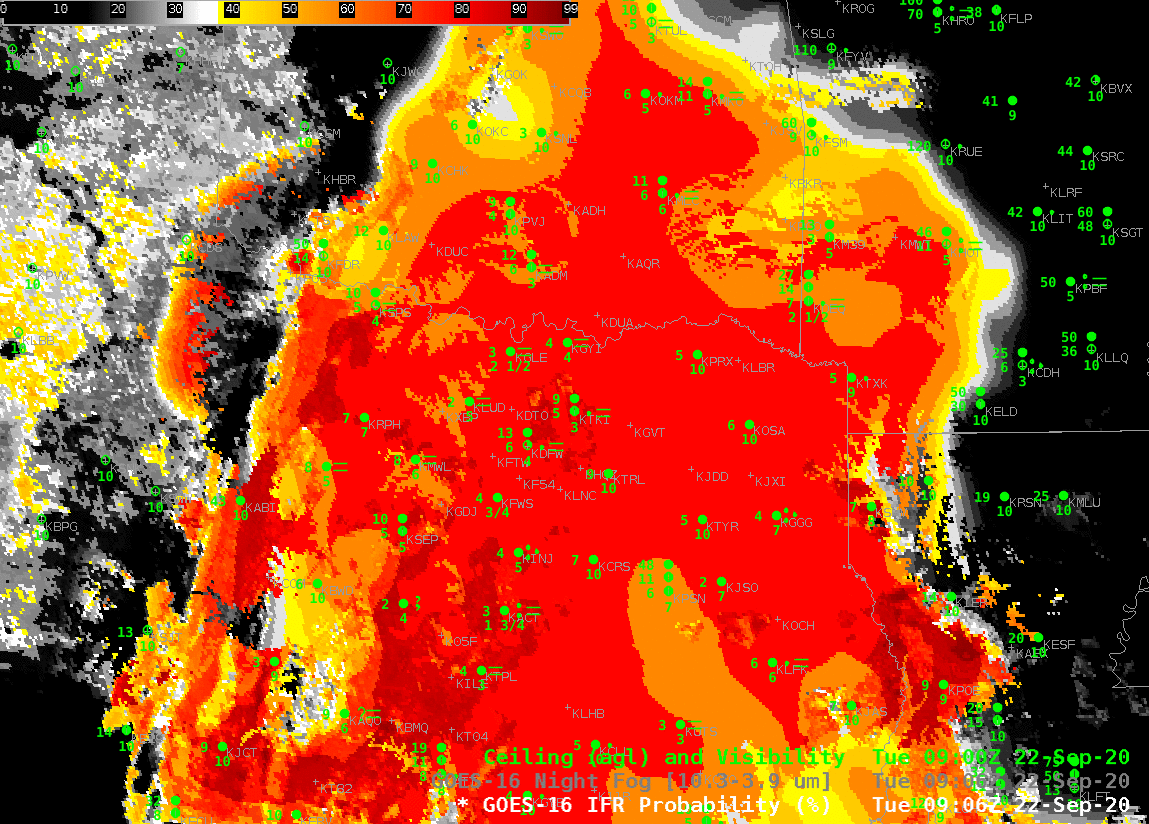
Widespread mid- and upper-level cloudiness over the southern Plains associated with Tropical Storm Beta on 22 September 2020 make it difficult to use satellite data alone to identify where low clouds and fog might exist. This is a day where IFR conditions exist, as shown here, an image from this website. Where would you expect IFR conditions to exist within this field of view? The Night Fog brightness temperature difference, below, (and, by extension, the Nightime Microphysics RGB) shows scant information over eastern Texas/Oklahoma or ArkLaTex. IFR Probability fields, in contrast, have a definite signal of high probability.
The animation of the Night Fog Brightness Temperature Difference field, below, also highlights a challenge in using this product: increasing reflection of solar 3.9 radiation occurs as sunrise progresses, changing the character of the field. Further, soils can have emissivity properties that are similar to clouds, and a positive Night Fog Brightness Temperature difference signal results. (This is especially true in dry regions, such as west Texas; linked-to map from this website).


IFR Probability fields for the same time as the Night Fog Brightness Temperature Difference, above, show a consistent region where IFR conditions are most likely. The region over the high Plains of Texas that has a signal in the Brightness Temperature Difference field has low probabilities because in that region, the Rapid Refresh model is not suggesting widespread low-level saturation. In contrast, the Rapid Refresh model over east Texas/Oklahoma, western Louisiana and southwest Arkansas does show saturation.
What do observations shows? The hourly observations overlain on the IFR Probability fields, below, show that IFR and near-IFR conditions are widespread within the region of high IFR Probability. Outside that region, IFR conditions are rare.

IFR Probability fields are flowing over the SBN to forecast offices. (TOWR-S RPM 19 is needed to display them from that data source). IFR Probability fields are also available via an LDM feed from Regionals if RPM 19 is not installed. They are available online at this website.
